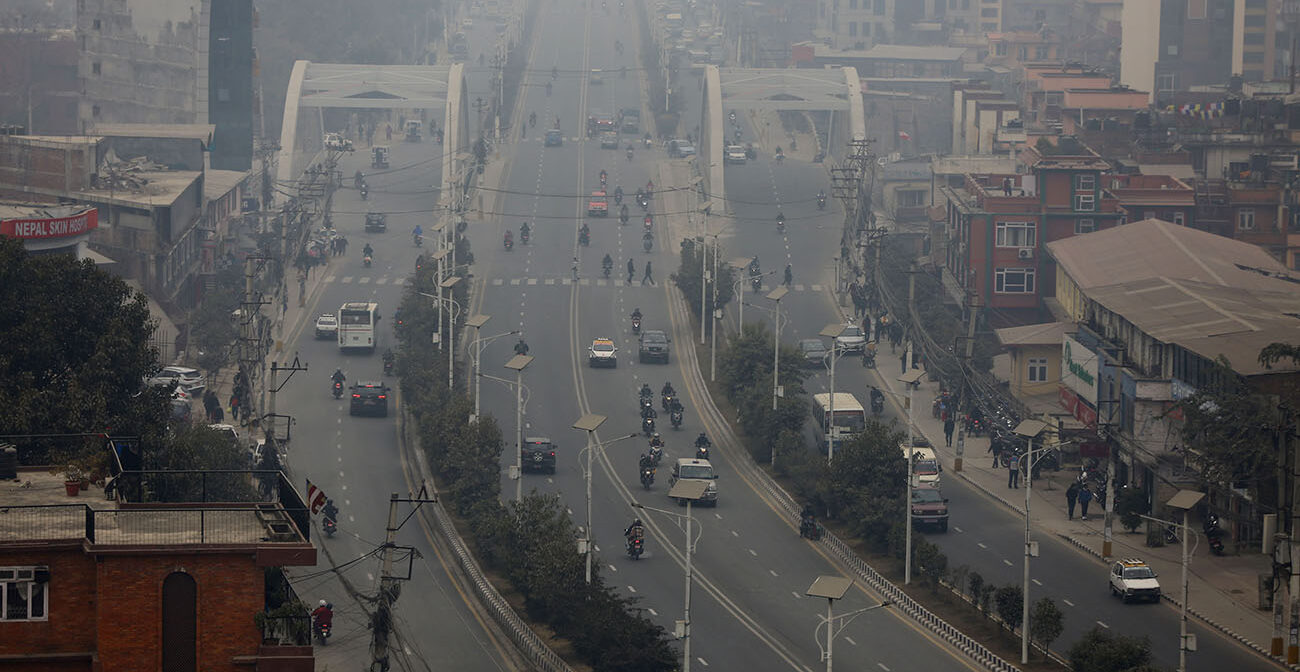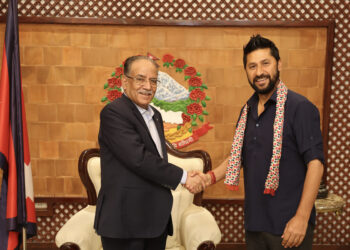KATHMANDU: Until recent years, the winter months in major cities across Nepal, notably the Kathmandu Valley, were marred by hazardous air quality, posing significant health risks to the populace.
On January 4, 2021, the Department of Environment issued a public alert concerning the perilous air quality in the Kathmandu Valley and other major towns, urging citizens to take preventive measures when outdoors.
Encouragingly, there is now positive news: air quality has seen a relative improvement in recent times.
According to Deepak Gyawali, the Department’s information officer, although air pollution experienced a significant surge in 2021, it has gradually decreased since then.
Key contributors to air pollution include carbon emissions from motor vehicles, dust particles from road repair and construction activities, emissions from industries and brick kilns, inadequate waste management practices, and forest fires.
Similarly, the use of firewood for cooking in rural areas significantly contributes to indoor air pollution. Moreover, increasing development activities in India and the burning of agricultural residues near the border exacerbate air pollution issues in Nepal.
Gyawali highlights that rainfall and wind during peak pollution seasons, as well as the dry season, play a significant role in mitigating air pollution.
Furthermore, the reduction in infrastructure development activities following an economic slowdown is speculated to have contributed to the improvement in air quality, although this hypothesis requires further study for confirmation.
Additionally, there has been an increase in the use of electric vehicles and cookstoves, along with the installation of new technology in brick factories, which are significant sources of air pollution.
However, due to the economic slump, only around 50 percent of these factories are operational.
Shankar Bahadur Chand, President of the Nepal Brick Factory Federation, stated that the brick market has reduced by 80 percent currently, with only about 40-50 percent of brick kilns operating at reduced capacity out of the 1,100 factories nationwide.
Despite these improvements, the air quality in some major cities, including Kathmandu, remains below the WHO standard. Kathmandu’s Air Quality Index (AQI) today averages 160, indicating an unhealthy atmosphere, prompting experts to emphasize the need for further efforts to improve air quality in the Kathmandu Valley.
The potential for air pollution resulting from wildfires remains a concern in Nepal.
Dust particles, smoke, carbon, chemicals, and various gases emitted from factories and industries, along with incidents of fires, contribute to heightened pollution.
Toxic gases such as sulfur dioxide, nitrogen oxide, and carbon monoxide, produced when burning fossil fuels, not only pose health risks but also contribute to global temperature rise.
The government has established Air Quality Monitoring Stations at 27 locations nationwide to measure air quality, with plans underway to set up three more stations in the current fiscal year.
Air pollution peaks between 7:00 am and 8:00 am.
Rajendra Shrestha, Programme Director of the Environment and Public Health Organization (ENPHO), emphasized the need to verify claims of improved air quality.
While acknowledging reductions in pollution sources and increased public awareness, he stressed that air pollution’s impact on health and the environment remains significant.
Air pollution-related diseases, particularly respiratory ailments, contribute to Nepal’s major causes of premature deaths.
According to the World Health Organization, around 40,000 people die prematurely in Nepal each year due to air pollution, making it a critical public health concern requiring collaborative efforts from all stakeholders to address effectively.









Comment